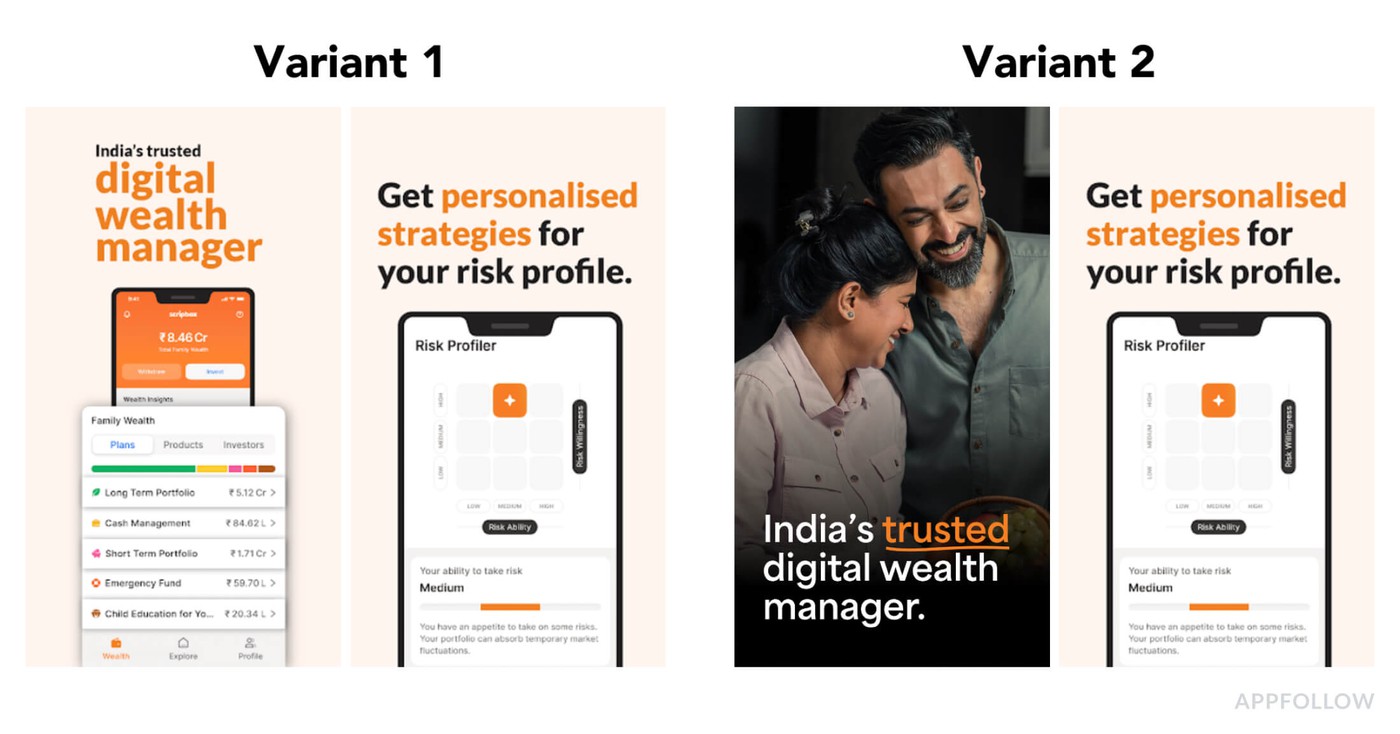5 ASO Tips to Optimise Your Fintech App

Table of Content:
5 ASO Tips to Optimise Your Fintech App
The Fintech market is a highly competitive landscape. The space is also one of the fastest growing, with 90% of the population using fintech Banking in China. According to McKinsey, revenue in the fintech industry is expected to grow three times faster than the traditional banking sector between 2023 and 2028.
Whilst it is a highly regulated industry, there is a huge opportunity to drive acquisition through organic means; this is where ASO comes in. App Store Optimisation (ASO) is pivotal in enhancing your app's organic visibility, attracting potential users, and ultimately driving downloads. For fintech apps, which cater to the dynamic and competitive world of financial services, effective ASO strategies become even more essential.
ASO should always be a fundamental part of any app marketing strategy. Because of how competitive the fintech space is, these apps need to stand out by implementing as strong an ASO strategy as possible.
By applying these ASO tips tailored to fintech apps, you can enhance the discoverability and desirability of your application in a crowded marketplace. Here are our top 5 App Store Optimisation tips for fintech apps.
Understand your seasonal highs
Like all apps in the app stores, seasonal moments offer real opportunities for adapting your ASO efforts to capture the increase in in-store traffic. This includes creative amendments and adjusting your metadata to start ranking for seasonal search trends. Unlike the standard seasonal moments like Christmas and Black Friday, there are niche seasonal events that Fintech apps need to take heed of and incorporate into their ASO efforts.
The events a fintech app needs to watch out for are:
Tax season
Fintech apps related to personal finance and tax preparation may see increased activity during traditional tax seasons. This is because consumers will be thinking more about their money and how they are spending it.
Fintech apps can take advantage of this heightened interest by promoting their services and showcasing how they can help users with tax-related tasks, budgeting, investment planning, and more. In the UK, this falls in April, and in America, this is between January 1st and April 5th.
Holiday seasons
If your app is involved in consumer finance or payment processing, it might be influenced by seasonal spending patterns, such as increased activity around holidays or Black Friday. Fintech apps may want to capitalize on this increased spending by promoting features such as budgeting tools, rewards programs, or discounts offered through their platforms.
Changes in financial regulations
Changes in financial regulations can sometimes follow a seasonal pattern, as government bodies may release updates or changes at certain times of the year. This can have a wider impact across the industry. So, making sure that users know about these changes and how your app can help them using your keywords and screenshots may be helpful.
Investment platform changes
Market conditions and investment cycles may influence fintech apps focusing on investment platforms. These are much harder to predict than other events throughout the year, so ensuring your marketing approach is adaptable can go a long way. Some of these volatile investment platforms could be the crypto or stock market.
Depending on your specific vertical, testing store creatives and running promotional activity such as In-App Events on iOS or Promotional Content on Google Play to reflect the recent changes to the market are great ways of staying relevant and engaging users.
Recommended practices
As we’ve said before, the fintech market is extremely competitive, so optimizing your ASO strategy is essential to success. One of the best ways to do this is consistent creative testing, as well as running Custom Product Pages for a more personalized journey for your paid users.
Always test creatives
Conducting A/B testing on your storefront creatives is also essential for any app. Because of the complexity of financial products, ensuring you run multiple creatives to find the right way to convey your value proposition is a must.
As seen below, Scripbox, a personal digital wealth manager, re-arranged the order of their screenshots to highlight the different value positions in the opening frames. By doing this, they can decide which screenshots drive higher conversion, which could significantly impact installs and even return on ad spend.

Scripbox A/B Test
By experimenting with different variations of user interfaces and functionalities, fintech apps can identify and implement improvements that resonate better with users, ultimately refining the overall user experience.
Make sure your fintech app is compliant
Compliance is critical in the app store, as we have detailed in a previous blog. However, for fintech apps, this is even more crucial. Both the Google Play Store and the Apple App Store seem to put fintech apps under heavy scrutiny when reviewing app submissions. Ensuring the T&Cs in your creatives align with Apple and Google’s latest policies is essential to make the review processes as smooth as possible.
Any claims within visible metadata should be easy to substantiate within the app itself, as reviewers on both stores are more likely to check these thoroughly when Finance is involved.
Not aligning with regulatory bodies can stop an app in its tracks before it even launches. The FCA ensures that financial markets work well, and their guidelines are designed to protect consumers, safeguard the industry, and promote competition.
Keyword optimisation
According to research, 70% of App Store Visitors use search to discover apps. Keyword optimization and implementation are crucial to increasing your app store visibility. AppFollow’s Keyword Live Ranking Tool will help you find out what keywords are ranking right now and allow you to make quick and adaptable changes.
Additional strategies include review mining, leveraging competitor insights for effective keywords, and utilizing tools like Apple Search Ads to predict potential high-performing keywords. Regularly updating your metadata with well-researched competitors and seasonally relevant keywords is essential to getting a leg up on the competition. As you only have 160 characters to work with on iOS, it’s vital to use this space effectively.
Monzo changed their description during May when people considered travelling for Summer. Usually, people are quite money-conscious when they go on holiday, so targeting these keywords will help make them rank better during these times.
Once you’ve chosen your keywords, it is key to track their performance. You can use a range of tracking tools with AppTweak and AppFollow. Keyword performance isn’t just affected by your optimizations in the app stores; increased performance from your competition, seasonal variations, and paid media are other contributing factors to consider.
Ratings and reviews
Did you know that 79% of users check ratings and reviews before downloading an app? Trust is a big part of why a user may choose to install one app over another, and this is even truer for fintech apps. Increasing your overall star rating, as well as the number of positive reviews, can go a long way toward increasing your overall acquisition and even user retention.
Positive reviews can build credibility when dealing with sensitive financial transactions, assuring users of the app's reliability and security. High ratings not only attract new users but also provide a competitive advantage.
Positive feedback contributes to ongoing user satisfaction and loyalty. We always suggest that you reply to every review as it shows users that you care about user concerns and even allows you to improve their perception of your app. It's also a great way of getting a few extra keywords indexed.

Source: Revolut review
Reviews have valuable insights for apps to identify areas for improvement, enhancing the app's features and overall user experience. Maintaining a positive brand image through user feedback is essential for long-term success and adherence to industry standards in the competitive fintech landscape.
Ratings serve as a quick reference for users assessing potential risks associated with an app, contributing to informed decision-making. The collective impact of ratings and reviews extends to marketing, public relations, and user engagement, making them integral to the success and sustainability of fintech apps.
Conclusion
An effective App Store Optimisation strategy is paramount to achieving organic visibility and overall user engagement, especially in a competitive environment like FinTech. By strategically incorporating relevant keywords, testing engaging visuals, being prepared for your peak season, staying compliant, and managing your app's ratings and reviews, you can enhance your app's discoverability and appeal to potential users.
ASO goes beyond just ranking higher in search results; it's about delivering a seamless user experience and staying responsive to user needs. A well-optimized fintech app that aligns with user expectations, supported by a proactive ASO strategy, positions itself for initial success and sustained growth.
FAQ
What are the key seasonal events for fintech apps in ASO?
Holiday Seasons, especially times like Black Friday, always see heightened consumer finance activities. Changes in financial regulations and shifts in investment platform markets, such as in the crypto market, are incredibly important periods for fintech apps to adapt their ASO strategies.
Does creative testing boost ASO for fintech apps?
Creative testing involves A/B testing storefront creatives and using Custom Product Pages for personalized user journeys. Fintech apps have complex financial products and must experiment with user interfaces to convey their value proposition better.
Is compliance required for fintech app ASO?
Ensure that terms and conditions in creatives align with the latest policies of Apple and Google to help smooth the review process. Transparent claims in metadata will help you stay compliant.









